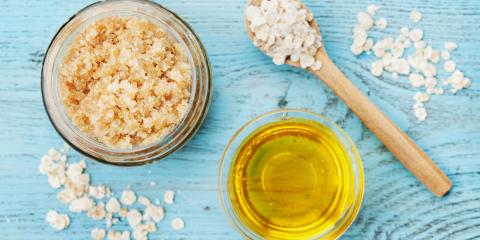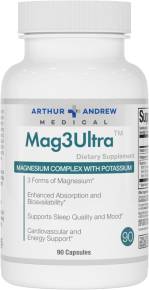The back, neck, and other joints are common sites for both acute and chronic pain.
Arthritis, mechanical problems, injury, osteoporosis, and repetitive stress can cause chronic pain in these areas.
Osteoarthritis usually hurts more in the morning when weight-bearing joints are stiff from not being used.
Osteoporosis, most frequently found in postmenopausal women, is thinning or weakening of bone. It’s caused by deficiency or poor absorption of bone-building nutrients like calcium, magnesium, and vitamin D.
Natural Remedies for Joint Pain
“There are many beneficial treatments for chronic back, neck, and joint pain,” says Anne Meyer, MD, who specializes in rehabilitation medicine in West Los Angeles. “First and foremost is obtaining the correct diagnosis.”
While most people with back and neck pain tend to turn to chiropractors, other integrative physicians (including naturopaths and osteopaths) can also be useful in determining the cause and treating it holistically.
Back pain is often linked to inadequate hydration, so drink plenty of water. Avoid sugary, refined foods and be sure to consume anti-inflammatory omega-3-rich fats.
Supplements play an important role too.
Nutritionist Gary Null, PhD, recommends magnesium salts for lower back and joint aches, as well as amino acids. DL-phenylalanine, for example, helps reduce chronic pain and may allow the sufferer to give up analgesic drugs.
Glucosamine sulfate supports joint health, and methylsulfonylmethane (MSM) fights inflammation.
S-adenosylmethionine (SAMe) reduces joint pain and inflammation, while superoxide dismutase (SOD) fights damage from free radicals.
The cetylated fatty acid Celadrin relieves pain and improves joint performance, according to research at the University of Connecticut.
And a multimineral formula from seaweed (Aquamin) appears to significantly reduce pain and stiffness, while allowing study volunteers to walk faster and longer.
Taken between meals, the enzyme bromelain is also useful. “Enzyme therapy has been used to treat arthritis for many years,” explains Tom Bohager, author of Everything You Need to Know About Enzymes. These supplements may also “improve circulation, support tissue repair, and improve nutrient absorption.”
Don’t forget herbs.
Andrographis (A. paniculata) relieves pain and swelling with rheumatoid arthritis. Research also finds white willow (Salix alba) bark and cayenne (Capsicum frutescens) useful for low back pain.
Consider anti-inflammatory botanicals like boswellia, ginger, nettle, and turmeric as well.
Other Integrative Approaches
For acute pain resulting from trauma, Dr. Meyer recommends Arnica, which “is a wonderful homeopathic medication that treats swelling, bruising, and pain,” either taken under the tongue in pellets or applied topically.
Rhus toxicodendron is a helpful homeopathic remedy for joint pain that is improved by motion and worsened by rest and humidity, she adds. Other useful homeopathic remedies include Natrum sulph for injury or trauma to the area where the spine meets the lower part of the skull and Magnesia phos for back spasms after heavy lifting or straining the back.
Jack Stern, MD, PhD, a neurosurgeon and expert on back pain, cites beneficial research results for acupuncture.
As reported in the Annals of Internal Medicine, acupuncture is effective for low back pain after eight weeks of treatment. “Many of my patients benefit from yoga, Pilates, and the Feldenkrais method,” the latter of which aims to structurally alter the body through awareness of movement and functional integration techniques that lead to more fluid (and less painful) motion.
“There are many chronic back pain sufferers who do so because of poor body mechanics. I think of this as repetitive stress syndrome of the back,” he explains.
Dr. Stern also recommends the Alexander technique (using touch to relearn the correct relationship of head, neck, and back for improved balance, movement, and posture) as particularly useful.
“Chiropractic is effective in dealing with pain and as a preventive treatment because it relieves nerve pressure,” notes Dr. Null. “If one vertebra is out of relationship to the one next to it, a state of disrelationship is said to exist. This disrelationship throws off that vertebra’s environment,” the blood supply and detoxifying lymphatic drainage surrounding it, bringing the body out of balance.
“Magnets can help with shoulder pain, pain in the rotator cuff, and aches in the lumbar region of the back,” he adds.
Easy to use and widely available, magnets are currently being investigated in a randomized, placebo-controlled trial for rheumatoid arthritis.
Stress management is critical, both in preventing and relieving pain (especially when it’s chronic). Try deep breathing, meditation, relaxation, and visualization techniques. Not only can these therapies help relieve stress but they also encourage good sleep habits.
If pain interferes with sleep, Dr. Null recommends valerian, hops, skullcap, or passionflower, taken a half hour before bedtime.
Simple Lifestyle Changes
Regular exercise strengthens muscles that support bones and joints.
“The key elements in the rehabilitation of a patient with benign chronic back pain are weight loss and core strengthening,” says Dr. Stern.
In addition to regular stretches, try aerobic and strengthening workouts that enhance proper functioning of the neck, back, and joints. To prevent back pain, don’t sleep on your stomach and be sure your mattress is firm enough to support you.
To maintain a healthy weight, substitute antioxidant-rich and high-fiber foods for refined and sugary ones. Also consider green and white tea extracts as well as adaptogens like ginseng (Panax ginseng) for added support.





